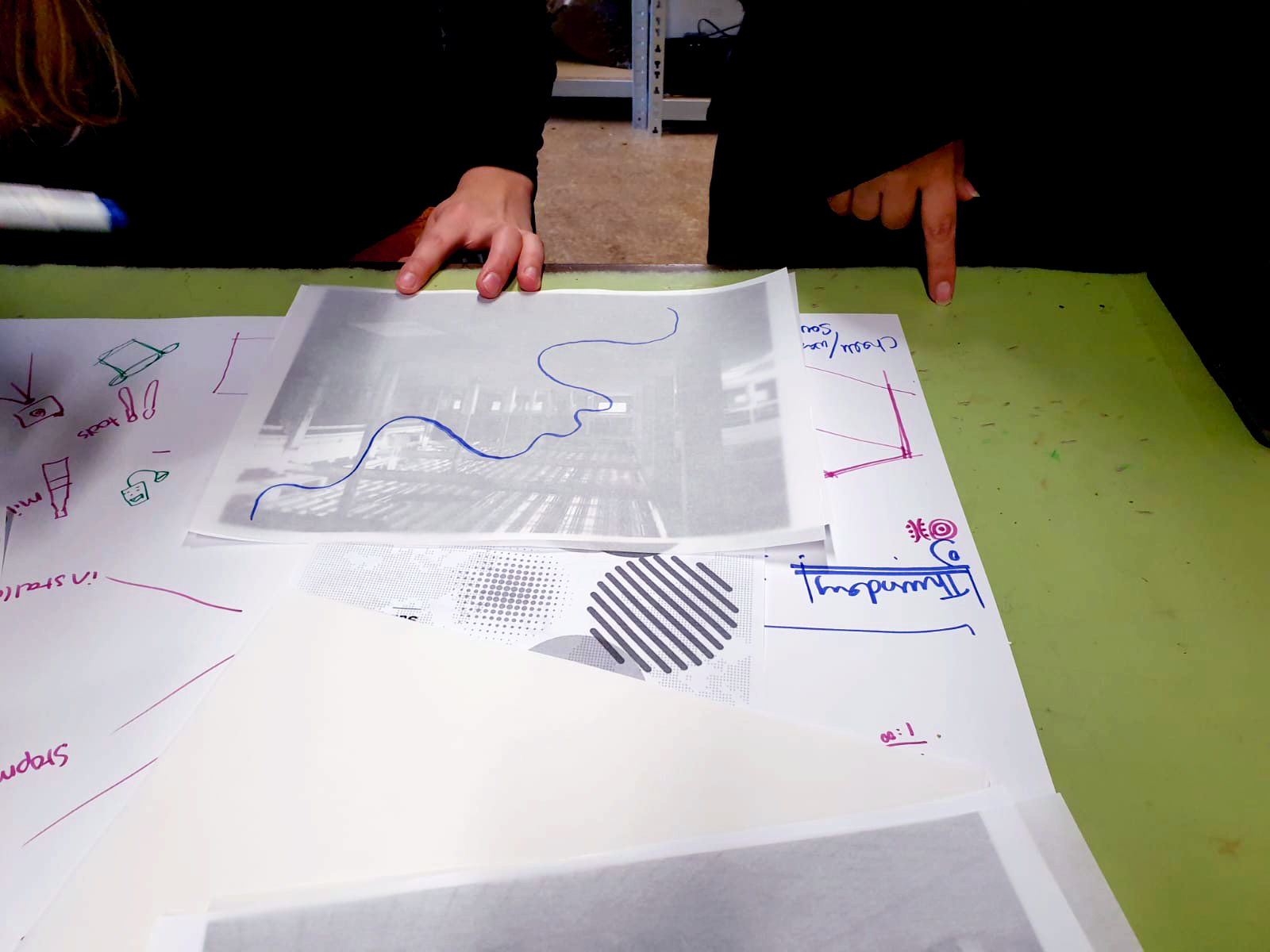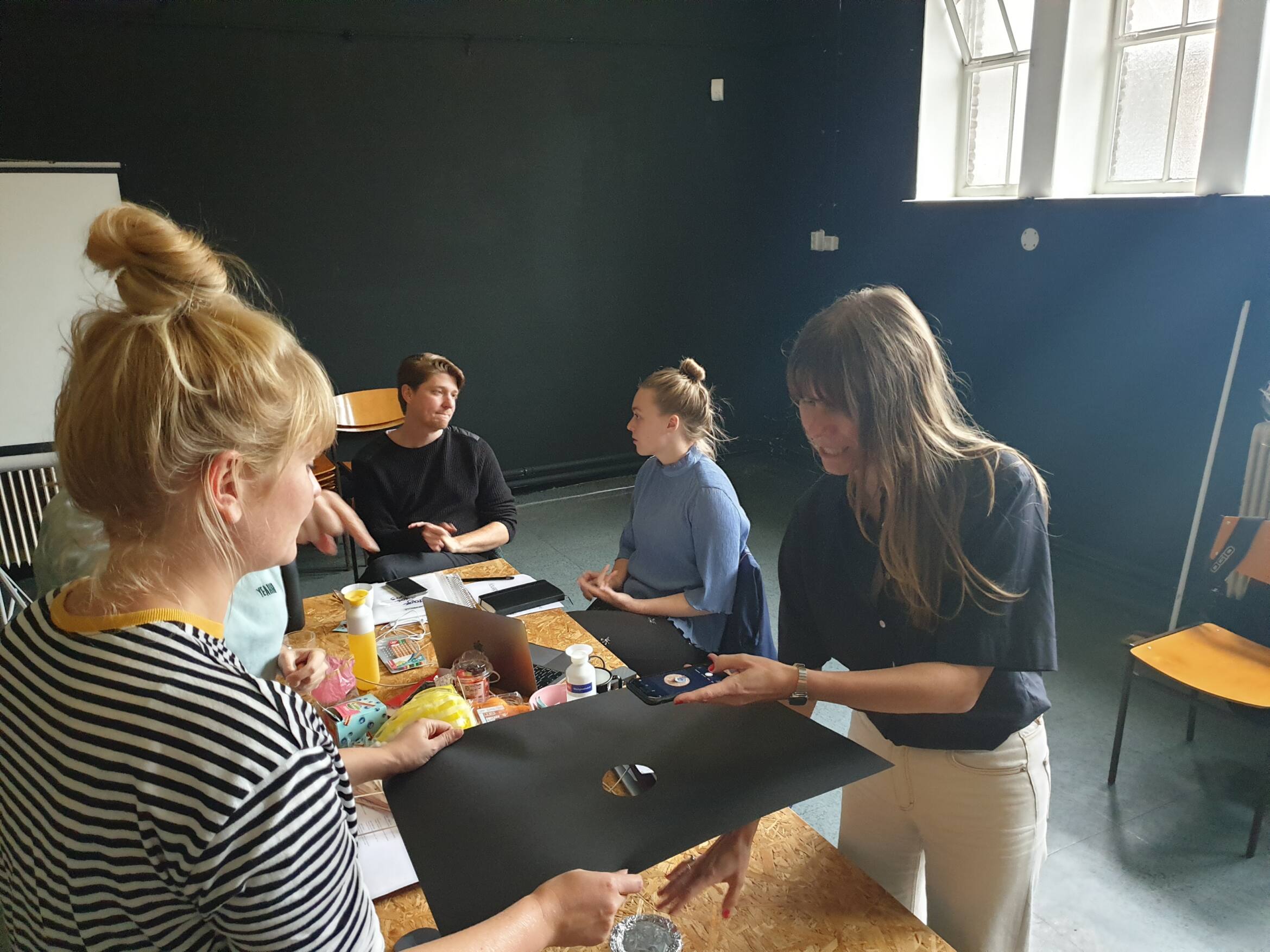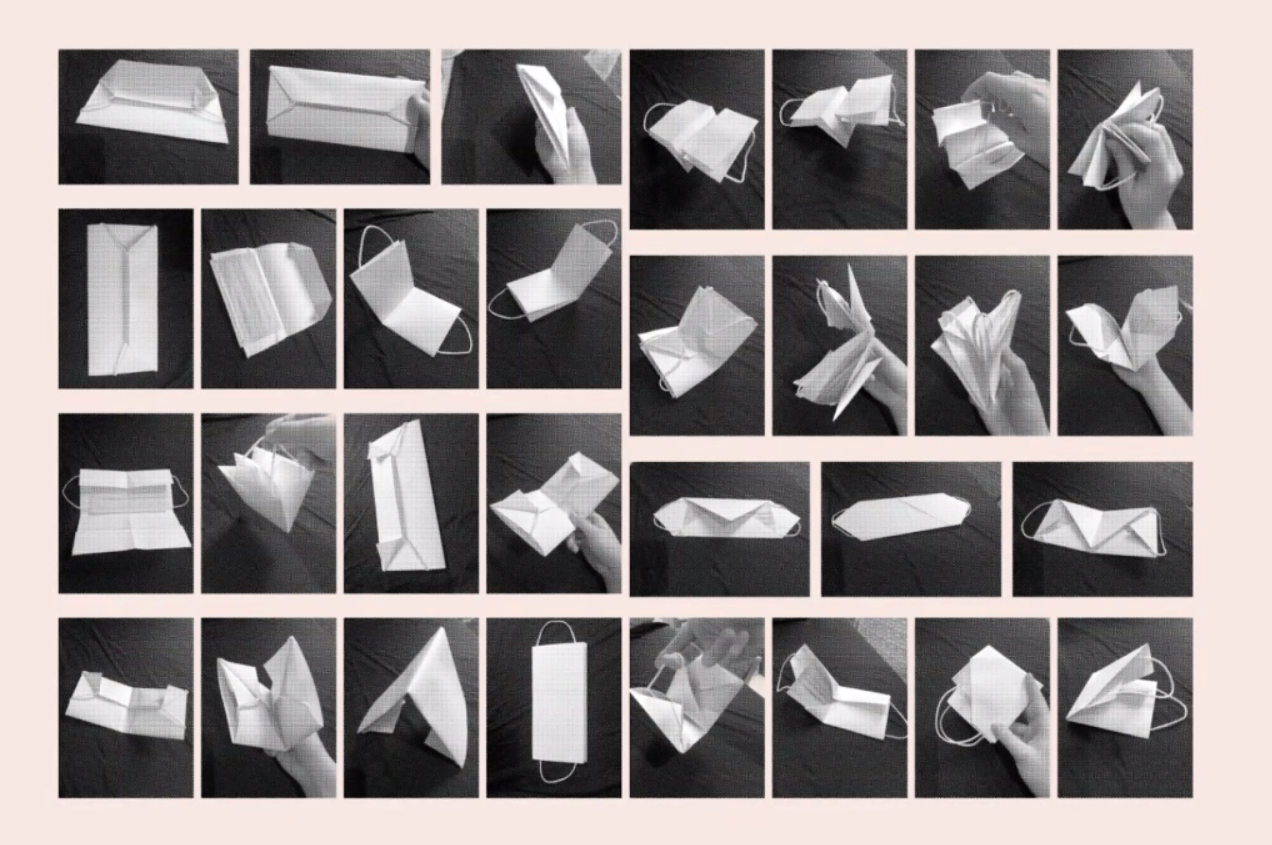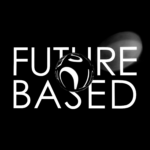The Wicked, the Wanted and the Wonder
Text: Sabine Winters / edit Kees Müller
At the beginning of 2020 it once again became very clear what kind of interconnected world we live in. What started on the other side of the world effortlessly came our way with lightning speed. For many, this time felt and still feels like an alienating experience, ‘as if we were living in a film’. During the period the Covid-19 situation worsened in the Netherlands, we of Fillip Studios and Future Based had just begun the second period of an interdisciplinary residency programme. In this residency programme, we explored precisely the interconnectedness of globalization and its possibilities, as well as the problems that come with it. After all, it is because all parts of the world are interconnected that a cross- and interdisciplinary view of the problems we encounter is needed.
Before Covid-19 shook the foundations of our world, it was already clear that 21st-century problems such as climate change and plastic soup cannot be easily and unilaterally solved. Even more banal and domestic problems show to resist one-sided solutions. Think of growing loneliness among the elderly, or preventing face mask pollution. Finding solutions to these complex issues demands a multi-perspectival approach, that is, innovative ways of thinking and doing. We think that the world of the future is interdisciplinary. For this reason, Fillip Studios and Future Based bundled their forces in 2019, and have put together a programme where interdisciplinary teams of scientists and artists collaboratively worked on case studies commissioned by actual clients.
For two years we programmed three residency periods of twelve weeks each, in which we curated teams of artists, designers and scientists. Aside from our interest in the process of interdisciplinary collaboration, we also consider it important to emphasise the different disciplinary values represented by the teams. Therefore, we combined scientific framing with artistic research, forming a process in which concrete issues commissioned by clients were questioned and researched from an interdisciplinary artistic-scientific perspective.
For example, an interdisciplinary team consisting of an astronomer and a fashion designer researched how to effectively nudge people to reduce face mask waste. Another team, that of a philosopher of technology, visual artist and anthropologist, researched how museums can measure and increase the impact of their art exhibitions. Furthermore, a graphic designer and an ICT controller conceptualized the integration of local economy initiatives into de Spijkerbuurt, a neighbourhood in Arnhem, the Netherlands. Other cases included themes such as challenging loneliness in cities, the future of robotics in health care, and improvement of ecological systems in residential areas. The cases were each presented by clients such as scientific institutions, governmental organizations or commercial companies. Towards the end of the programme, each team presented their concepts to the client.
But how do we ensure that these different disciplines are actually mutually enhancing? During the Fillip Studios and Future Based residency we tried to answer precisely this question. In this short reflection, we will discuss what we focused on during the residencies, what we learned, how things could be improved, and most importantly, how we believe you can achieve successful collaboration with interdisciplinary teams. We have provided a toolkit at the end of this reflection, which contains important tips and tricks for interdisciplinary collaboration. Should you want to know more about the how and why of our residency or the toolkit itself, feel free to contact us via:
Sabine Winters of the interdisciplinary philosophy platform Future Based / goodnews@futurebased.org
Tom Kortbeek, Roos Meerman of design studio for wonder Fillip Studios / info@fillipstudios.com
The Wicked
Yes, it might be that we are preaching to the choir when we state the importance of interdisciplinary thinking. After all, we are a design studio working on the intersection between art and science, and an interdisciplinary philosophy platform on art and science. But let’s take a step back. As is shown in our introduction, we cannot deny that we are living in a time of wicked problems; complex questions that not only involve social and cultural dilemmas, but also issues that are interconnected on the basis of their complexity, which makes them difficult or (seemingly) impossible to solve. The term “wicked problem” was first coined by Horst Rittel, design theorist and professor of design methodology at the Ulm School of Design, Germany. Examples of wicked problems are climate change, loneliness in elderly communities, or privacy versus safety matters in technological societies. Wicked problems cannot be answered with a simple ‘yes’ or ‘no’. Even more so, a characteristic of wicked problems is that there is always more than one explanation for them, because possible explanations vary greatly depending on individual perspective.
We all have unique knowledge frameworks that are formed by experience, education and culture, and which colour our views on the world. And here, we think, things become interesting. How can one guarantee a fruitful interaction between different disciplinary perspectives on the same issue? On the one hand, our individual knowledge frameworks are a constraint in the sense that they limit how we view the world to things we value. On the other, within this individual knowledge framework, we carry our unique individual perspectives and can be of valuable contribution when trained in becoming better at interdisciplinary exchange, which makes us more flexible in changing perspectives.
Therefore, not only the teams’ composition, but also the selection of cases and programme structure were decided upon on an interdisciplinary basis. During these two years, there have been cases from the economic, technological, cultural, and commercial fields. There have been teams in which theatre scholars have worked with architects and fashion designers, musicians with visual arts teachers and psychologists. We have had workshops from the likes of sociologists, dramaturges, molecular biologists and philosophers. Through continuous trial and error, we have been able to decide what the best team and programme compositions are.
“All parts of the world are so interconnected that a cross- and interdisciplinary view of the problems we encounter is needed.”
Our biggest lesson during the first residency period was that getting to know each other (and each other’s views), process evaluation and expectation management are of utmost importance in every collaboration, but most notably in interdisciplinary settings. Because of the wide variety of participants and cases, we wanted to emphasize familiarization with each other’s frames of reference. We found that participants were not just juggling with the different disciplines, but also with the cognition of the problem at stake. During interdisciplinary conversations, the participants co-constructed their colleagues disciplinary frames and included personal approaches from their own disciplines, (political) agendas, cultural backgrounds and beliefs. “What is at stake for me? What would be my role in developing the further concept?” These were questions that guided this stage.
Thus, the reason for our programme’s interdisciplinary approach was to show the participants different sides of the same debate. Carefully and deliberatively weighing the options could then result in innovative solutions. Although the primary focus was on interdisciplinarity, the disciplines involved also served an important independent role, namely to break down the case’s immensely complex and wicked problems into manageable parts that demanded a specific disciplinary solution.
The Wanted
As we have claimed earlier, the broader goal behind these residencies was not merely to respond to the particular cases, but also to nurture the idea that creative thinking, art and culture are essential and equally valuable components of problem solving in an inherently interconnected world. Complementarily, therefore, we would also argue that we should get rid of conceptual and intellectual hierarchies, such as “higher education” and “lower education”. Think, for example, of the difference between an anthropologist who would like to do preliminary literary research, and a visual artist who would much rather think in pictures and make a collage. Why would the former be better than the latter? What purpose can combining forms of research have for overcoming these binaries?
From this perspective, we wanted each way of thinking to have the space to exhibit their added value. In our current society, there is often an emphasis on substantiation from science. Consequently, the stage is largely reserved for science only, and the arts are commonly disregarded as a legitimate source of knowledge. How can that be? Let’s just take a moment to reflect on what it is that we are missing, and why we should value the power of artistic expression and thinking. Think for example about innovation and entrepreneurship. Often without even realizing it, artists and designers, through their unique methods and ways of thinking, gain access to the most fantastic and innovative ideas. Our programme was designed to materialise these fantastic ideas, and to provide the opportunity to make them workable in the context of a concrete case study.
During the students’ supervision, we discovered that a substantial amount of participants were stuck with the question “How to transform idealistic goals into practical solutions?” The residency’s programme created the opportunity to explore this question in an interdisciplinary context. It is precisely by bringing together different ways of thinking, by having makers and doers and thinkers develop a method or concept for a wicked case, that fruitful new ideas emerge. Where one participants thinks visually, others prefer empirical field research. Yet others prefer indexation or literary-critical argumentation. Therefore, we focused on linking different ways of thinking through collaborative workshops, and by connecting different research processes. In this context, philosophy functioned as a tool to think critically about the established frameworks and thought processes that govern different disciplines, and to make way for common ground between these disciplines. Examples would be asking analytical questions about the method the teams had devised to address a particular problem, or the creation of new research frameworks.
Moreover, we kept a sharp focus on the pitch that was to take place at the end of the residency period. Not only is it important to have a tenable idea, it is also worthwhile to think about the way in which it is most effectively communicated, to justify the tools necessary for the project’s further development, and to decide what part you want to play in the process. What results do you want to bring to the client? What do you as a participant want the client to do with your idea, and what do you want to happen with your results and findings after this residency?


Right: Training on expectation management by Abdelrahman Hassan. Left: Turning ideas into practice.
The Wonder
We value independent disciplinary development and we believe in expertise per discipline, i.e. complete familiarity and comfort within an individual discipline. We also believe in excellence. At the same time, we believe in lifelong learning, in questioning this expertise and established frameworks. An interdisciplinary process is the ideal way to learn about your own assumptions and methodologies, to look at them from a different angle, and to think critically and self-reflexively about them.
This sounds easier than it is, because interdisciplinary approaches demand flexibility, curiosity and self-reflection, which in the end showed to be rather difficult to inspire. Due to the need for developing a hybrid process of online and offline gatherings, we learned that what was primarily at stake was cooperation within the teams and shaping ways of information exchange. Occasionally, students did not understand each other very well, or showed differences in commitment during the process. Additionally, the residencies’ time frame of played an important role: in only three months’ time, in addition to getting acquainted with the various interdisciplinary works, a concept had to be developed and presented. In both the offline and online meetings, input from the participants played an important role. In the workshops, we not only wanted the students to communicate well with each other, but also to foster a mutual sense of wonder and inspiration for each other’s fields of expertise.
In order to establish this sense of wonder and inspiration, at the very start of each project we ensured that the participants were free to familiarise themselves with the case in their preferred ways. At this first stage, participants eagerly shared their insights and envisioned outcomes for the case. Energy and focus are high when there is room to let ideas run free. There were workshops about ideation, deliberation about ideal results, the making of mood boards and continuous exchange of possible approaches. During the residency’s first three weeks, participants’ involvement was intensive. However, for us as organisers, it proved to be very challenging to retain that feeling of inspiration throughout the rest of the project, especially because of our limitation to online teaching and communication.
” Energy and focus are high when there is room to let ideas run free.”
In the fourth week, there was a turning point. At that stage, the intermediate reports had to be delivered to the clients, which meant that the first choices on framing the answer and first ideas for conceptual solutions had to be formulated and presented. When the participants were asked to frame their idea in a report, a certain ‘commitment’ had to be made to an initial idea. Because of the short period of time that participants have to translate an initial brainstorm into a concrete concept, the high level of energy and amazement at the start of the programme gradually dissipated, and often resulted in an atmosphere of friction. In order to ensure the residency’s success, the emphasis of the program was on the guidance, coaching and communication of and between the teams. The projects’ transposition to an online environment further problematised this already challenging task. Taking care to achieve a result together, planning ahead, expressing expectations and adjusting to unforeseen circumstances is an important aspect of this transition.
Having overcome this moment of friction, in which participants chose what idea or concept would be central to the rest of the project, new feelings of cooperation and the will to exchange knowledge and information arose. Nevertheless, some students felt they did not want to continue working on the concept, some teams limited themselves to mere speculation about the concept, and yet others were invested in formulating a feasible idea with distinguished roles for each of the team members. We felt that the best results were found in those teams that took the time to familiarise themselves with all participants’ expectations, where there was mutual understanding for different perspectives, and where personal bias was suspended in order to cooperatively build new frames of reference.


Left: Conceptual Design workshop by Roos Meerman. Right: Concept design by Erika Verebélyi and Michelle Vossen.
Conclusion
The purpose of this residency period was fourfold. First, we wanted to offer students an interdisciplinary platform where they could not only learn new skills but also make use of our network, studio and tap into our knowledge base. Second, we wanted to offer the clients the added value of interdisciplinary thinking; the interaction between science, art and design positively contributes to challenging fixed and rigidly delineated frameworks otherwise employed in everyday problem solving, such as academic research. On the other hand, the residency showed that academic research can also serve as the a backbone for artistic research. Third, we wanted to emphasise that there are different ways of learning and knowing, and that hierarchizing different approaches is counterproductive when trying to collaboratively solve problems and come up with solutions. Last but not least, this residency period was also a way to test our own ways of working and, where necessary, to adjust our expectations and methods regarding organisation and planning.
In this interdisciplinary collaboration, we had the pleasure of working with representatives of different disciplines, from astrophysicists and psychologists, to philosophers and ICT professionals, designers, theatre makers and visual artists. Additionally, we worked with international participants, for example from India, Portugal, and Hungary, who all brought to the table their own disciplinary knowledge, cultural background and ways of thinking. Particularly challenging was to come up with an efficient way to bring these different types of work together, and to encourage (but also guarantee) a fruitful intellectual and practical exchange. Because of the cases’ differing points of departure, we chose to focus on collaboration and multiple ways of concept building. We got to know each other personally in different ways, including design thinking exercises, but also through a concept design workshop in which the participants had to provide a visual product as solution to their problem.
Solutions were developed in joint interdisciplinary teams and were shared with each other to become stronger together. We value solutions that testify to idealism, but that also keep realistic end-goals in mind. They make the world a better place, but are also feasible and sustainable. In this way, interdisciplinary cooperation can be said to be more impactful than unilateral approaches to complex problems. We noticed that in this process of interdisciplinary exchange of methods and research approaches, friction, surprise and astonishment arise about how others look at the world, about the self-awareness of our own frameworks, about holding on to and letting go of values and norms. Thus, an interdisciplinary process is never just about examining professional methodologies, it is also a subjective investigation into values, norms and conventions about what you as a person find important to include in a research process.
During the residencies, the participants were given the opportunity to develop into and within a team where cooperation between art and science really leads to unique and novel interactions. The unusual presence of a broad palette of teachers and guides, the cases’ idealistic-realistic slant, the small-scale, intimate interactions, and the participants’ intrinsic motivation to work together made this project a valuable learning experience for clients, participants and us as an organisation alike.


Left: Presentation by Puck Vonk and Jiajia Qi. Right: Presentation by Puck Vonk and Jiajia Qi. Photos by Tosca Schift.
Interdisciplinary TOOLKIT:
1. Point of departure: Becoming Better Traders
The teams are formed, the program is ready. But how do you make sure information is shared in a productive way? First, advise collaborators to break down information frameworks and then build them back up again together, thereby stimulating mutual recognition amongst team members. Expectations are thus adjusted and everyone will be on the same page. Emphasising that interdisciplinary work will be and remains an ongoing learning process is an important aspect of this part of the programme.
2. Collaboration: Evaluating Before Kicking Off
A good conversation is often underestimated. This while communication is essential to getting to know each other and making progress. By unravelling hidden agendas, everyone will be informed about each other’s stakes beforehand. This is extremely important, because in addition to having one’s own agenda, assumptions can be made about the differing individual work processes. An academic will work differently than a graphic designer. What do they expect from each other? Transparency about individual expectations and ways of working possibly prevents friction later on in the process.
3. Methodologies: Re-Framing Focus
In various phases of the projects, we noticed that the freedom given by the cases’ broad description was more of a challenge than conducive to collaboration. The broader your commitment, the more difficult it is to frame – even more so in interdisciplinary collaboration. Therefore, we pressed the participants to re-formulate the initial case in their own interpretation and to make important decisions even in the early stages of their work. When there is no clear goal initially, chances are high that retroactive reparations have to be done at a further stage, which problematizes the primary goal of finding solutions to well-articulated issues.
4. Creating: The Benefits of Friction
Working together is always difficult. In every team, of whatever composition, no matter the challenge, disagreements, discussions and friction arise. When it comes to interdisciplinary work, each individual has a strong preference for a particular form of work: a designer thinks visually, for example, while an astronomer likes to think in formulas and tables. The transition from one specific approach and mode unique to one discipline to a totally different mode of working is an extremely difficult process. Especially when the question posed by the client clearly is far too complex to answer in three months. Most friction occurred in teams in which the research question was not properly determined and where the choices made were mixed. We decided to resolve this friction with an approach that focused on peer-to-peer feedback, in order to create an even more diverse spectrum of interdisciplinary approaches to the case. This was done through tutor gatherings in which we focused on the questions “What role do you want to have in this team, and what role would you like to have in the project after the pitch?”
5. Narratives : Increasing Impact
Telling your story sometimes seems even more important than having a really good idea. But sometimes a really good idea comes off particularly badly because of a mediocre story. How do you make sure your concept doesn’t become a bluff story, but also doesn’t fall victim to a boring narrative? In this final part of the collaboration, we urge you to focus on the concept’s narrativization, centralizing the process rather than the goal, emphasizing the urgency of viable solutions, and determining what you need of your audience to make it happen.
